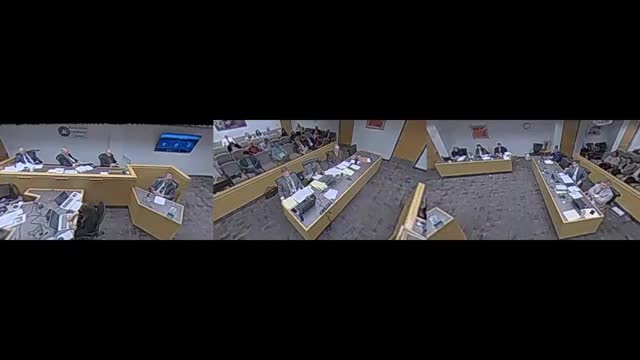Witnesses highlight Pacific Corp's soaring insurance costs versus other Western utilities
March 23, 2025 | Utah Public Service Commission, Utah Subcommittees, Commissions and Task Forces, Utah Legislative Branch, Utah
This article was created by AI summarizing key points discussed. AI makes mistakes, so for full details and context, please refer to the video of the full meeting. Please report any errors so we can fix them. Report an error »

During a recent government meeting in Utah, discussions surrounding Pacific Corp's insurance costs took center stage, raising concerns about potential mismanagement and its implications for local residents. Witnesses highlighted that Pacific Corp's insurance expenses have surged significantly compared to other utilities in the Western United States. This trend has prompted calls for limiting rate increases to align more closely with those observed in competing utilities.
The debate centered on the percentage increases in insurance costs, which some experts argue do not accurately reflect the value or effectiveness of the coverage provided. Critics pointed out that these percentage figures can be misleading, as they depend heavily on the starting costs of insurance. For instance, Pacific Corp previously enjoyed low insurance costs, which have now escalated dramatically, resulting in high percentage increases. In contrast, other utilities that began with higher insurance costs have seen smaller percentage changes, despite potentially larger absolute increases.
This discrepancy raises questions about the overall risk management strategies employed by Pacific Corp. Experts emphasized the need for a more nuanced analysis that considers the actual risks faced by each utility, rather than relying solely on percentage increases. They argued that understanding the true value of insurance requires a comprehensive evaluation of the liabilities and risks associated with each utility's operations.
As the discussions continue, the implications for local residents remain significant. Any decisions made regarding insurance costs and rate increases will directly affect utility bills and, consequently, the financial well-being of the community. Stakeholders are urged to consider these factors carefully as they navigate the complexities of utility management and consumer protection.
The debate centered on the percentage increases in insurance costs, which some experts argue do not accurately reflect the value or effectiveness of the coverage provided. Critics pointed out that these percentage figures can be misleading, as they depend heavily on the starting costs of insurance. For instance, Pacific Corp previously enjoyed low insurance costs, which have now escalated dramatically, resulting in high percentage increases. In contrast, other utilities that began with higher insurance costs have seen smaller percentage changes, despite potentially larger absolute increases.
This discrepancy raises questions about the overall risk management strategies employed by Pacific Corp. Experts emphasized the need for a more nuanced analysis that considers the actual risks faced by each utility, rather than relying solely on percentage increases. They argued that understanding the true value of insurance requires a comprehensive evaluation of the liabilities and risks associated with each utility's operations.
As the discussions continue, the implications for local residents remain significant. Any decisions made regarding insurance costs and rate increases will directly affect utility bills and, consequently, the financial well-being of the community. Stakeholders are urged to consider these factors carefully as they navigate the complexities of utility management and consumer protection.
View full meeting
This article is based on a recent meeting—watch the full video and explore the complete transcript for deeper insights into the discussion.
View full meeting

